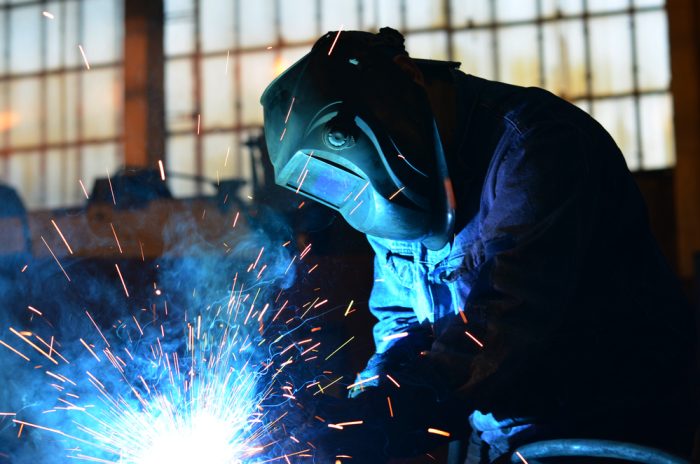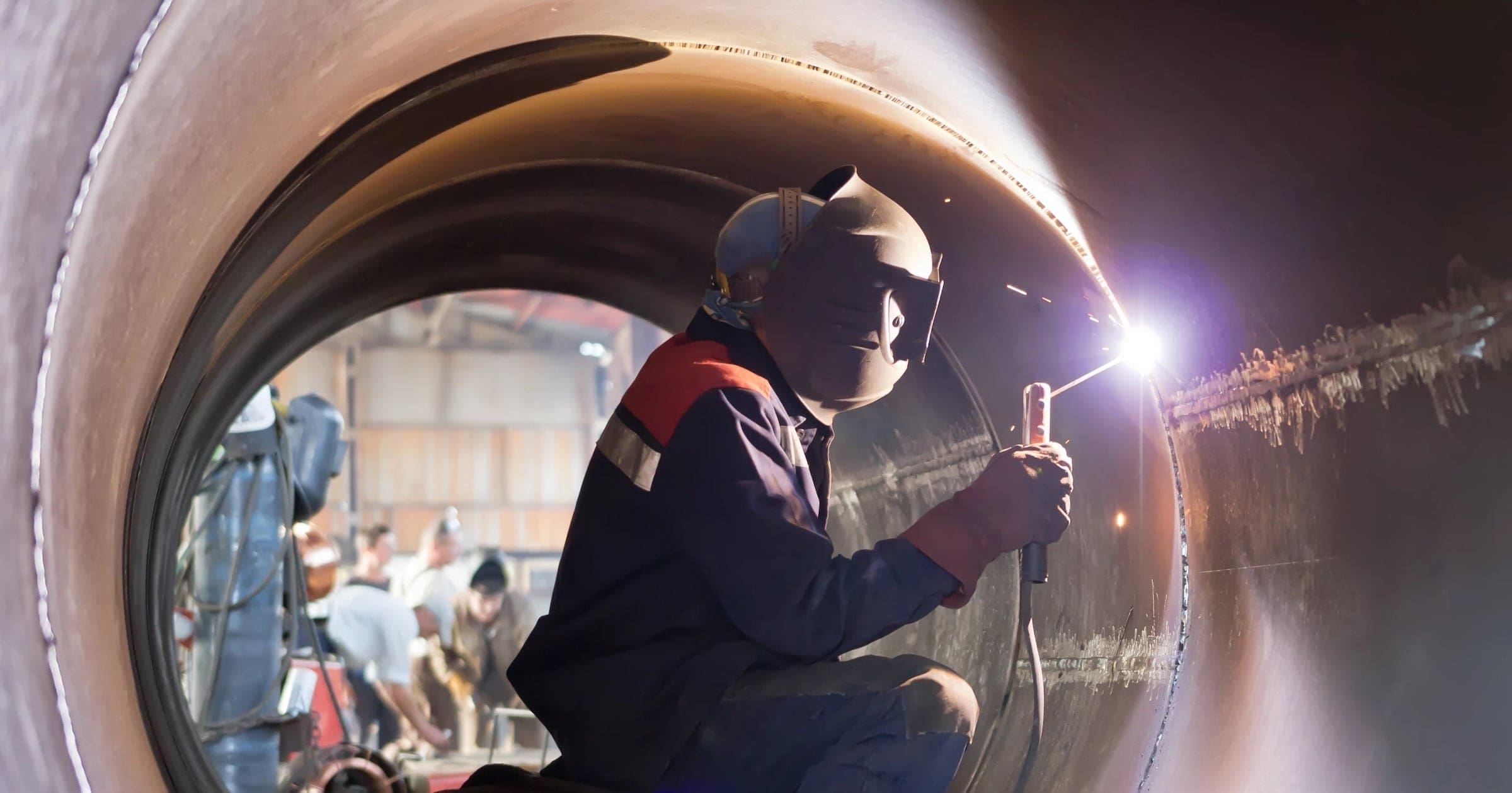Common Welding Repair Issues and How to Address Them Effectively
Welding fixings usually run into a range of problems that can jeopardize the stability of the final product. Usual problems include insufficient penetration, porosity, and imbalance, to name a few. Each defect provides special obstacles that require details strategies for resolution. Recognizing these issues is crucial for welders aiming to boost their skills and outcomes. This conversation will check out these common welding fixing problems and effective approaches to address them.
Poor Penetration
Poor penetration happens when the weld steel fails to fully fuse with the base material, causing weak joints and prospective structural failures. This concern often comes from inadequate warm input, wrong electrode angle, or improper welding rate. Welders might come across inadequate penetration due to a mistake of the required parameters for a details product density or kind. In addition, contamination on the base material's surface area can hinder efficient bonding, aggravating the problem. To deal with poor infiltration, welders should guarantee ideal setups on their tools and preserve a tidy job surface area. Routine assessment of welds is recommended to determine any shortages early, permitting timely corrections and the avoidance of compromised architectural stability in bonded assemblies.
Porosity
Porosity is a typical flaw in bonded joints that materializes as little gas bubbles trapped within the weld metal. This problem can compromise the honesty of the weld, bring about minimized stamina and potential failure under stress. Montana Mobile Welding and Repair Belgrade. Porosity usually develops from contamination, wetness, or improper welding strategies, which permit gases to run away into the liquified weld pool. To attend to porosity, welders must assure proper surface area preparation, maintain a clean workplace, and make use of suitable welding criteria. Additionally, choosing the right filler product and shielding gas can mitigate gas entrapment. Regular inspection and screening of welds can help identify porosity early, assuring prompt restorative activities are taken, therefore maintaining the quality and reliability of the bonded structure
Imbalance
Misalignment in welding can occur from various aspects, including improper arrangement and thermal growth. Understanding the source is essential for efficient resolution. Several modification strategies are readily available to straighten parts and assure architectural stability.
Reasons for Imbalance
Welding imbalance often originates from a variety of underlying concerns that can endanger architectural honesty. One primary reason is inappropriate fit-up of parts prior to welding, which can result in voids and irregular surface areas. Variants in thermal expansion throughout the welding procedure can likewise cause distortion, particularly if the products being signed up with have different coefficients of growth. Additionally, inadequate fixturing and clamping might fail to hold components firmly in position, leading to movement throughout welding. Inadequately kept devices, consisting of welding makers and tools, might present disparities in the weld grain, more adding to misalignment. Finally, operator error, stemming from inadequate training or experience, can additionally play a substantial duty in developing misaligned welds.
Correction Techniques Readily Available
Attending to misalignment successfully needs a combination of restorative techniques customized to the particular issues handy. One typical technique is using jigs or fixtures to hold parts in the right placement during welding, guaranteeing regular positioning. In addition, preheating the products can assist reduce distortion and enhance fit-up. For considerable misalignment, mechanical realignment methods, such as using hydraulic jacks or clamps, can be utilized to fix the placement prior to welding. Post-weld heat therapy might additionally be needed to ease stress and anxieties brought on by imbalance. Careful examination and change during the configuration phase can prevent misalignment concerns from ending up being significant troubles, advertising a smoother welding process and boosting general structural honesty.
Distortion
Distortion is a common challenge in welding that can emerge from different variables, including unequal heating and cooling. Comprehending the sources of distortion is crucial for executing reliable avoidance strategies. Resolving this concern not just improves structural integrity yet additionally boosts the total high quality of the weld.
Reasons of Distortion
When based on the intense warm of welding, materials commonly undertake changes that can lead to distortion. This sensation largely arises from thermal expansion and contraction during the welding procedure. As the weld location warms up, the product broadens; upon air conditioning, it gets, which can produce interior tensions. Furthermore, uneven heating across a workpiece can exacerbate these stress and anxieties, causing bending or flexing. The sort of material additionally plays a substantial duty; metals with varying thermal conductivity and coefficients of growth may react in a different way, bring about uncertain distortions. In addition, bad joint style and insufficient fixturing can add to misalignment during welding, enhancing the possibility of distortion. Recognizing these reasons is vital for efficient welding repair work and avoidance methods.
Prevention Techniques
Effective avoidance techniques for distortion throughout welding focus on regulating heat input and ensuring proper joint style. Maintaining a consistent warmth input assists to minimize thermal expansion and contraction, which can result in distortion. Making use of methods such as preheating the work surface aluminum welding can likewise minimize the temperature level slope, promoting uniform heating. In addition, selecting proper joint designs, such as T-joints or lap joints, can enhance security and reduce stress focus. Applying appropriate fixturing to secure the workpieces in position further help in preserving placement throughout the welding like it process. Ultimately, staggered welding sequences can distribute warmth much more evenly, protecting against localized distortion. By using these approaches, welders can greatly reduce the chance of distortion and enhance the total quality of their welds.
Cracking
Cracking is an usual issue experienced in welding repair work, frequently resulting from various factors such as inappropriate cooling prices, product selection, or inadequate joint preparation. The event of splits can greatly endanger the integrity of the weld, resulting in potential failures during operation. To resolve this problem, welders must initially assess the source, making sure that materials work and suitably chosen for the particular application. In addition, managing the cooling price during the welding process is essential; fast cooling can induce stress and anxiety and result in fracturing. Appropriate joint layout and preparation likewise add to lessening the danger. Carrying out these techniques can boost weld quality and sturdiness, inevitably reducing the possibility of splitting in finished weldments.

Insufficient Blend
A considerable concern in welding repair services is insufficient blend, which takes place when the weld steel does not adequately bond with the base product or previous weld passes - Montana Mobile Welding and Repair Belgrade Welding. This issue can cause weaknesses in the joint, potentially jeopardizing the integrity of the bonded structure. Elements adding to insufficient fusion consist of inadequate heat input, improper welding strategy, and contamination of the surfaces being joined. To resolve this issue efficiently, welders should guarantee proper pre-weld cleaning and surface area prep work, as well as adjust their welding specifications to attain appropriate infiltration and combination. Routine evaluation during the welding procedure can also assist recognize insufficient combination early, enabling timely restorative actions to improve the overall quality of the weld
Overheating
While welding repairs can improve structural stability, overheating provides a substantial difficulty that can bring about material destruction. Too much heat throughout welding can change the mechanical residential or commercial properties of metals, causing lowered strength, boosted brittleness, and warping. This sensation is particularly crucial in high-stress applications where architectural find more dependability is extremely important. Recognizing getting too hot can include visual assessments for staining or distortion, in addition to monitoring temperature throughout the welding procedure. To minimize the risks related to overheating, welders must utilize appropriate strategies, such as managing heat input, changing travel rate, and making use of suitable filler products. In addition, implementing pre- and post-weld heat treatments can aid recover product residential or commercial properties and enhance the general quality of the repair, guaranteeing lasting performance and safety.
Often Asked Inquiries
What Are the Usual Signs of a Welding Defect?

How Can I Test My Welds for Top quality?
To examine welds for top quality, one can utilize visual assessments, ultrasonic testing, and radiographic approaches. Each method guarantees architectural integrity, recognizes defects, and verifies adherence to defined criteria, ultimately improving the reliability of the bonded joints.
What Security Precautions Should I Take While Welding?
When welding, one need to focus on safety and security by wearing appropriate personal protective equipment, ensuring appropriate air flow, protecting combustible products away, keeping a clean work area, and being conscious of environments to prevent injuries and crashes.
Can I Repair a Weld Without Redoing the Entire Joint?
Repairing a weld without redesigning the whole joint is possible, depending on the damages (Montana Mobile Welding and Repair Belgrade Fabrication). Strategies such as grinding, including filler product, or utilizing a welding procedure can effectively deal with particular defects while preserving the bordering framework
What Devices Are Vital for Effective Welding Repairs?
Important tools for efficient welding fixings consist of a welding equipment, cable brush, mill, safety gear, clamps, and filler products. Each tool plays a crucial duty in guaranteeing top quality and security during the repair procedure. Porosity normally develops from contamination, moisture, or incorrect welding strategies, which allow gases to escape into the molten weld swimming pool. Badly conserved equipment, consisting of welding makers and tools, may present inconsistencies in the weld bead, additional adding to misalignment. When subjected to the intense warm of welding, materials commonly undergo modifications that can lead to distortion. Breaking is a typical issue come across in welding repairs, usually resulting from numerous factors such as improper cooling prices, material option, or insufficient joint prep work. A considerable concern in welding fixings is insufficient fusion, which takes place when the weld metal does not effectively bond with the base product or previous weld passes.